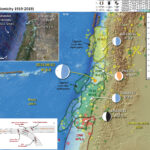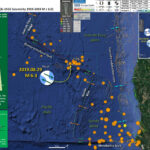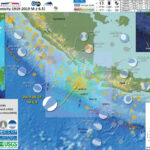I am catching up on earthquake reports today as I was in the field the past couple of weeks… Well, these reports are getting too long. So, I have placed the explanatory material on 2 web pages, so one does…
Earthquake Report: Blanco fault
Well, these reports are getting too long. So, I have placed the explanatory material on 2 web pages, so one does not need to read through that stuff if they have been here before. I will link those pages in…
Earthquake Report: Sunda Strait, Indonesia
Around the beginning of the month, I was helping get a fundraiser prepared for a weekend concert series (audio crew for load in and strike; stage manager during the show). So, I was away from the computers when there was…



